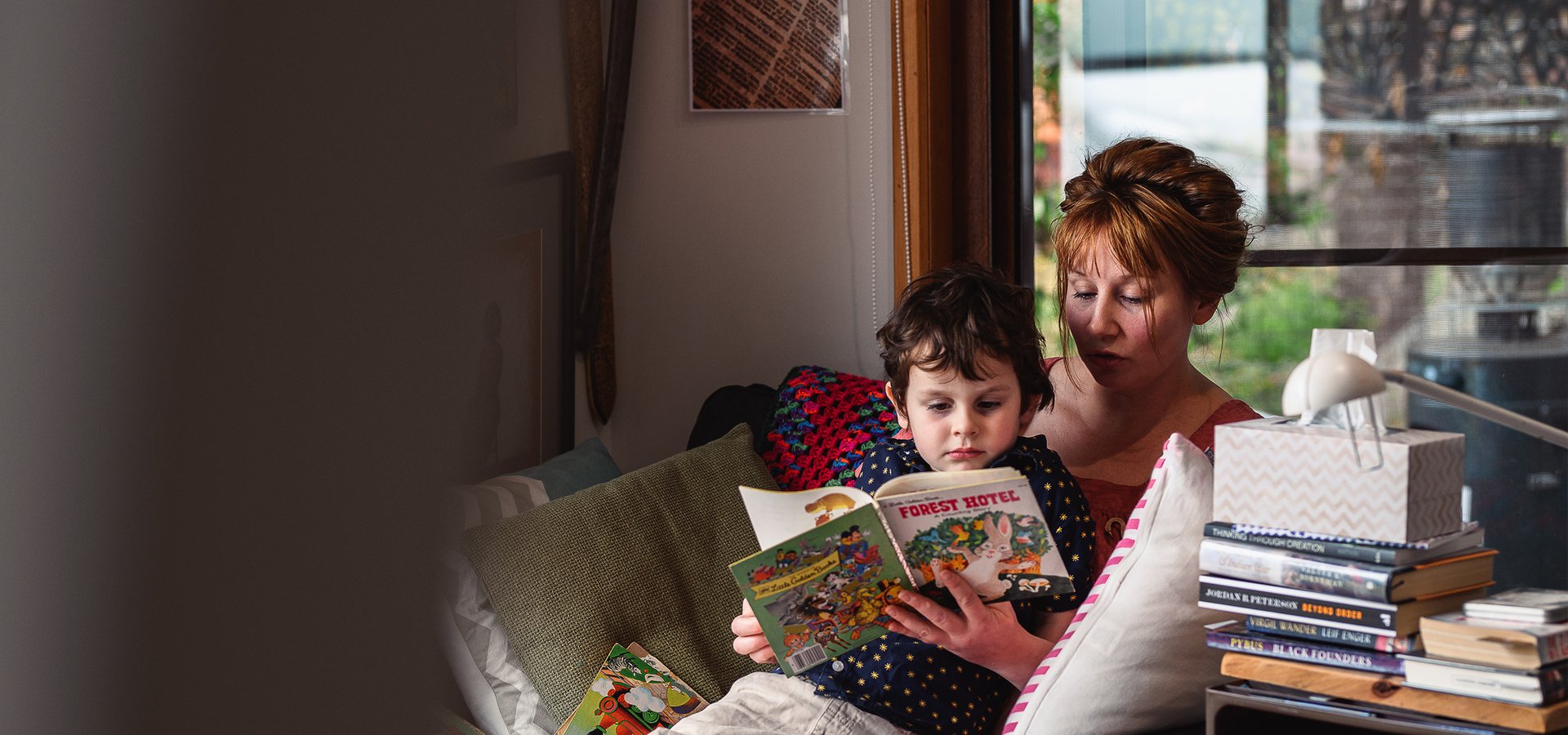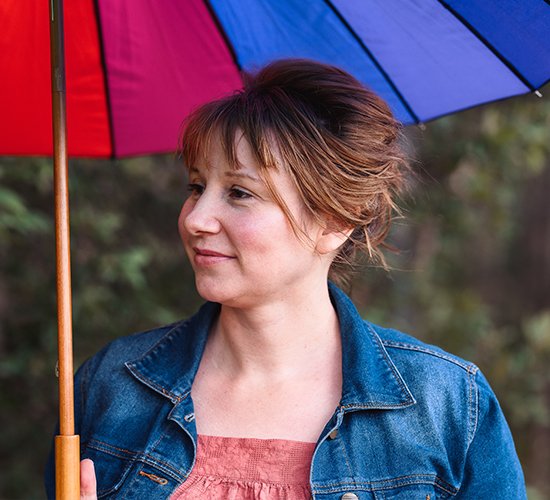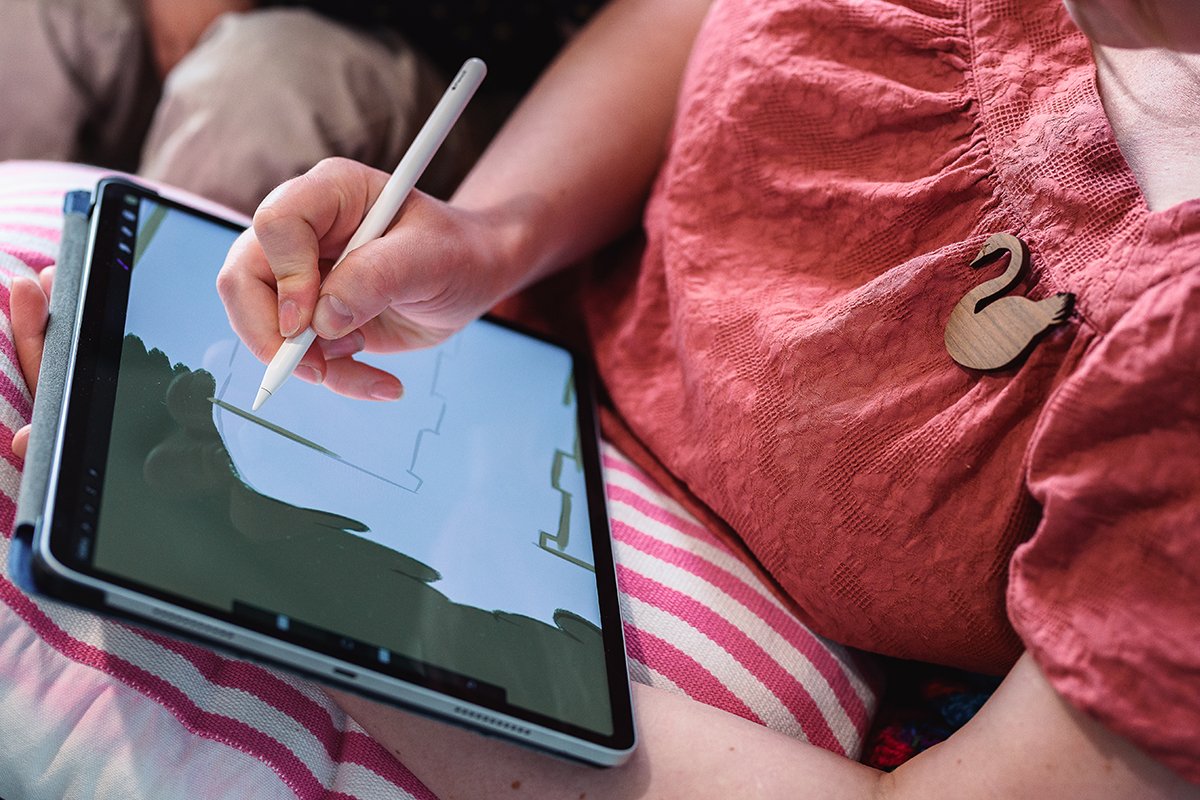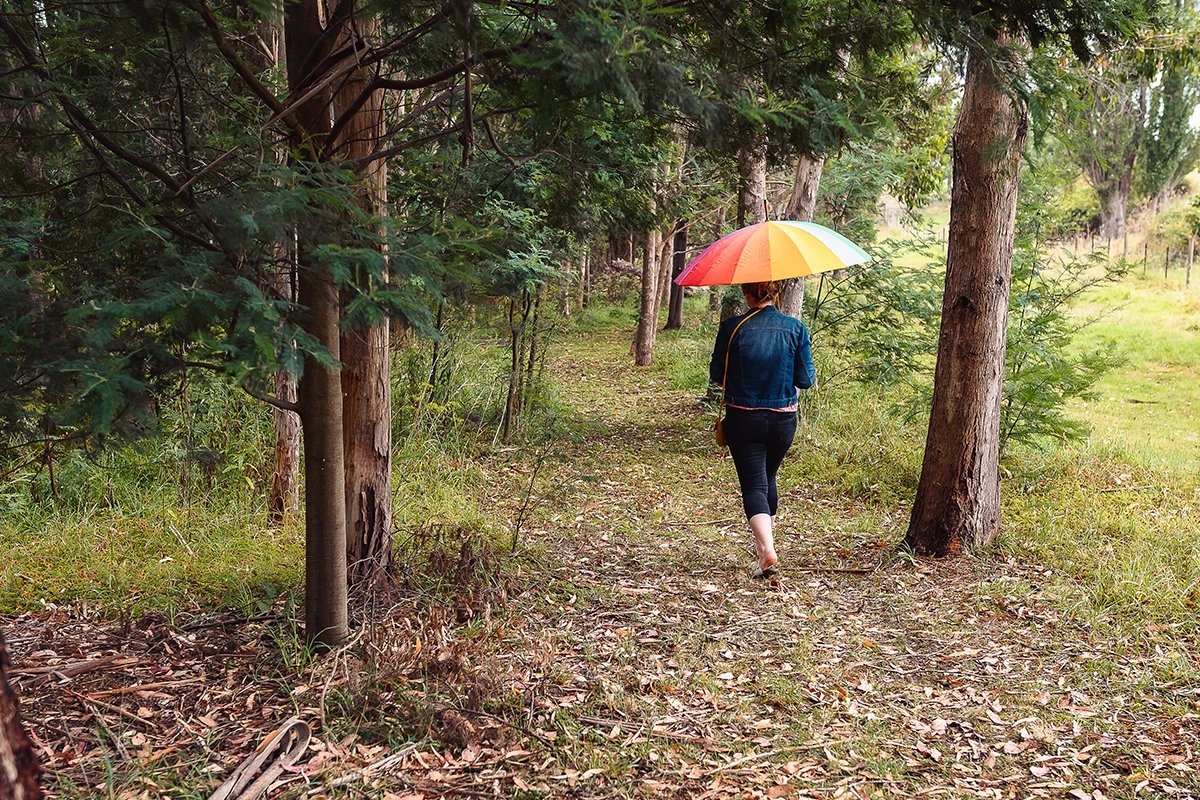Shiloh Longbottom
"My parents told us lots of stories. We saw them reading and we read together. We were in a household of reading, and it was a kind of parenting by example."

"It’s a matter of having the desire to learn, to work hard at it – to passionately work hard at it. You need the desire to pursue a creative career and allow yourself to be fostered in it. For me, that was the lightbulb moment: the decision to study and learn."

Many of us might imagine growing up to be an artist as a calling, a dream that begins in childhood and ends with a sense of destiny fulfilled.
For Shiloh Longbottom, drawing and creating was something she had always done. But she didn’t plan on it as a career. That part came later, after years of travel and experimentation with different jobs. Then, at the age of 28, a casual suggestion by a friend set her on a creative path, and, suddenly, everything felt right.
Shiloh was born into an artistic household – literally. Her parents built their own mudbrick house outside of Margate, and Shiloh’s earliest memory is of making a mudbrick wall with friends who had come to help. Her father was an art teacher, but he had never built a house. “He didn’t know anything about building,” Shiloh recalls. “He just went to some courses and learnt from friends who were builders. It’s actually quite inspirational, that he’s the sort of person who was willing to learn it and give it a go.”
This home, framed with Tasmanian timber and nestled in a five-acre bush block up in the hills, was almost like a member of the family for Shiloh. “Growing up in the bush and in that environment, it was very formative. So much of my imagination and inner world was shaped by the place I lived in,” she says.
Her childhood experiences stimulated a sense of imagination that she treasures to this day. Shiloh recalls reading picture books with her parents and being encouraged to play outside. “My parents told us lots of stories. We saw them reading and we read together. We were in a household of reading, and it was a kind of parenting by example,” she says. Young Shiloh populated the world outside their home with characters from her favourite books. “I would be reading a book and thinking imaginatively, then taking that imaginative play outside. I loved Lord of the Rings, and trees became Ents, for example. Bringing that meaningful story to the natural world – it makes you appreciate it more and have that deeper connection. The world I grew up in was imbued with imagination and characters from books.”

Shiloh spent her entire childhood in that mudbrick house, then went on to study philosophy at the University of Tasmania. Like many Tasmanians, she moved interstate, to do an honours year at the University of Melbourne. She travelled around the United States and elsewhere, ultimately returning to Tasmania. Her strongest connection is to the Channel area around Margate. “It was that attachment to this area, on an emotional level,” she explains. “There’s something comforting and home-like about it. I’m just drawn to it; it’s a visceral and yet intangible thing.”
She experimented with different jobs, trying out office work and even studying nursing. “To be a nurse, you need this encyclopaedic knowledge, and that’s just not me. I’m a lateral person, making connections, and I realised nursing wasn’t for me. I was trying to figure out what resonated with me.”
One day, a friend who had seen her drawing made a small, off-hand comment: “Why don’t you give graphic design a go?” “He probably doesn’t even remember saying it,” Shiloh laughs. But that simple statement prompted Shiloh to seriously consider a creative career for the first time. She enrolled in a graphic design course at TasTAFE, and everything fell into place. “I was with this group of people who were like-minded, and we fed off each other. Once I started studying it, I realised it was exactly the right decision. People around me were affirming, saying ‘that’s exactly what you should be doing.’ And it was good – a bit like a flow state – where I felt energised but also had this sense of being settled.”
Shiloh doesn’t believe that innate talent is the bedrock of a creative career. She says, “it’s a matter of having the desire to learn, to work hard at it – to passionately work hard at it. You need the desire to pursue a creative career and allow yourself to be fostered in it. For me, that was the lightbulb moment: the decision to study and learn.”

Shiloh’s approach to illustration is one of immersion – creating worlds that the reader can inhabit. She describes something transcendent yet deeply personal: “It’s something of yourself that people are engaging with. But it’s also something bigger than themselves they’re tapping into. It’s something from your imagination, but amazingly, you can convey those feelings and beliefs and thoughts that they can be a part of. It often creates that sense of wonder and awe.”
As a parent of two little Tasmanians, aged 4 and 2, Shiloh has been able to reconnect with the experiences of reading and creativity she loved so much as a child. Like many parents, she juggles parenting and illustrating, often drawing during naptimes.
She tries to instil in her children the same love of nature and sense of imagination she feels lucky to have grown up with. And she wants them to have a sense of hope and possibility. Shiloh partly attributes arriving at a creative career later in life with the unspoken stigma against working in the arts: “Even though people aren’t explicitly saying it, the visual arts are often valued culturally but not pragmatically. You pick up on that growing up, so it was a feeling I had, a sense of low confidence, that it wasn’t a path to pursue.” With her own children, she aims to create space for their imaginations to flourish. “Part of parenting is letting them do their thing,” she explains. “I read to them, I sit down and create with them and alongside them. I let them take their imagination and run with it. I’ve always loved illustration, but since having children, my passion for it has grown. If kids love it and can engage with it, that’s really affirming. I know it’s good if I draw an animal and they can tell me what it is!”
For Shiloh, it has been an “amazing honour” to be part of Little Tasmanian. As a parent of young children, she has a strong belief in the power of reading and story. The Little Tasmanian world she has created is an invitation for people to connect with this place. And her own experiences have taught her the impact of even small comments, delivered by supportive people at the right moment. “For a little person, their passion can be quite fragile. Someone can say the wrong thing so easily. I would want children out there who are looking for their passion to pursue it, to disregard any discouragement. The power of the Tasmanian village – it comes from the community. From that perspective, it has been a privilege to make a book for small children.”
We worked with southern Tasmanian photographer Moss Halliday-Hall for this Tasmanian story.